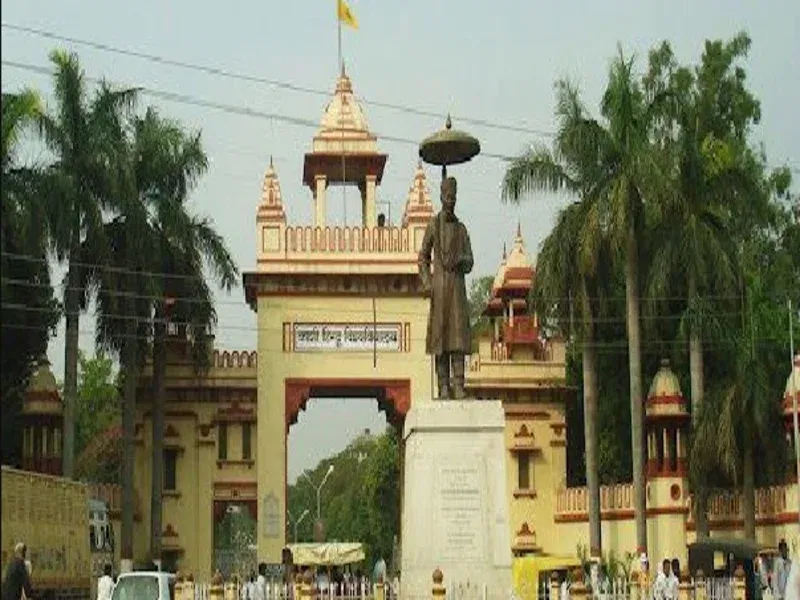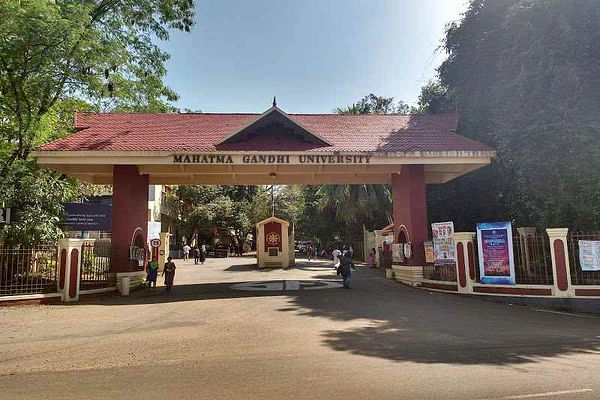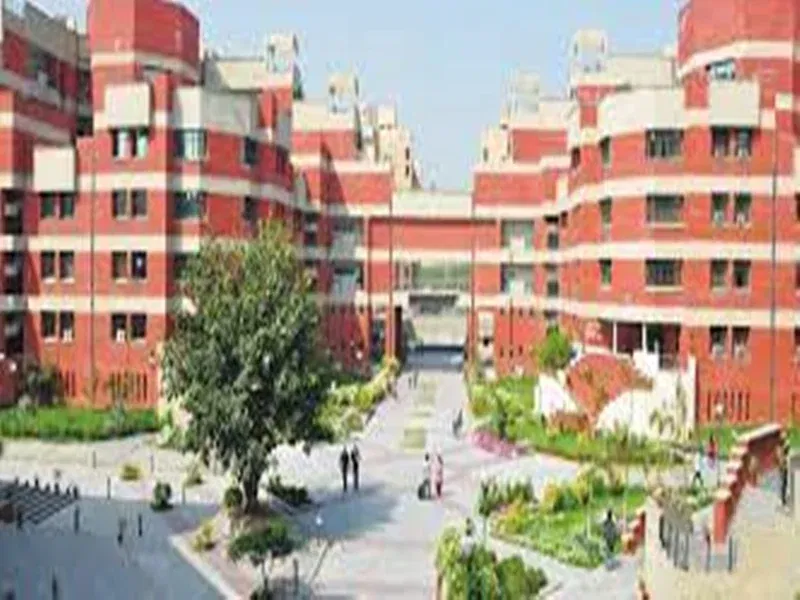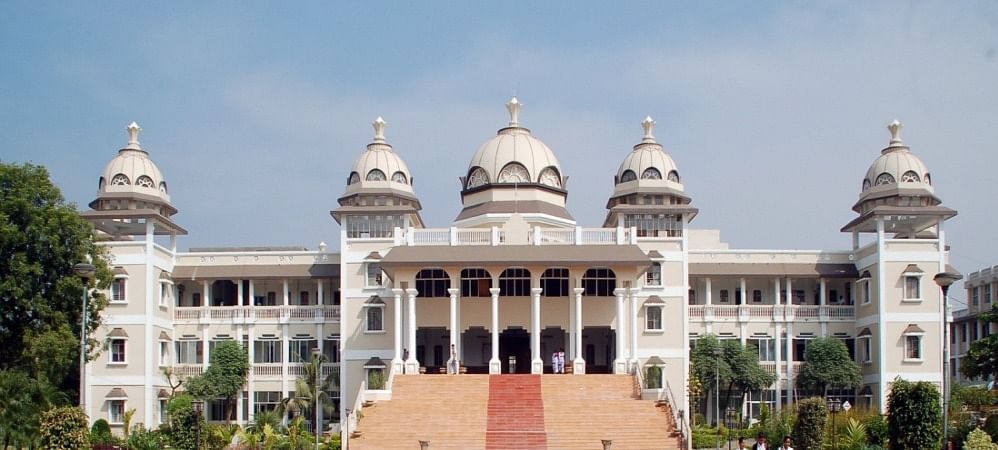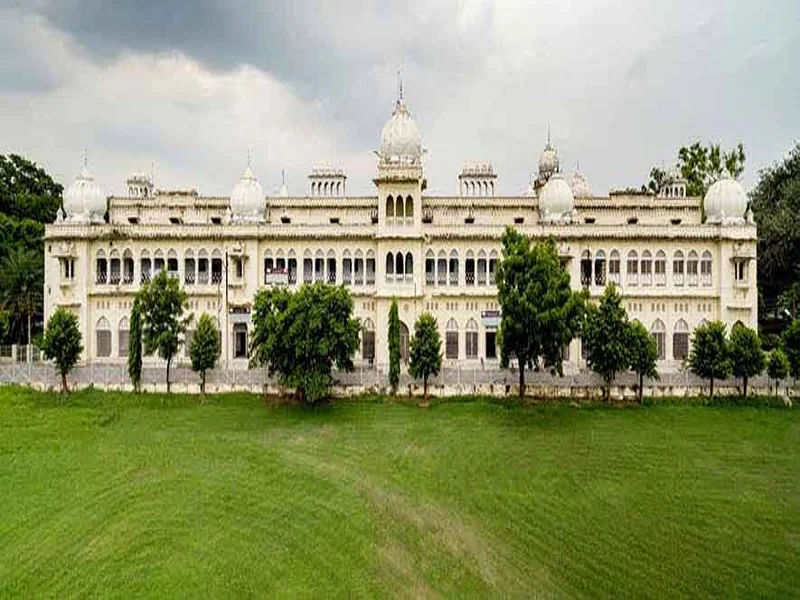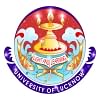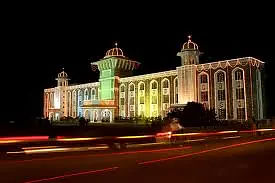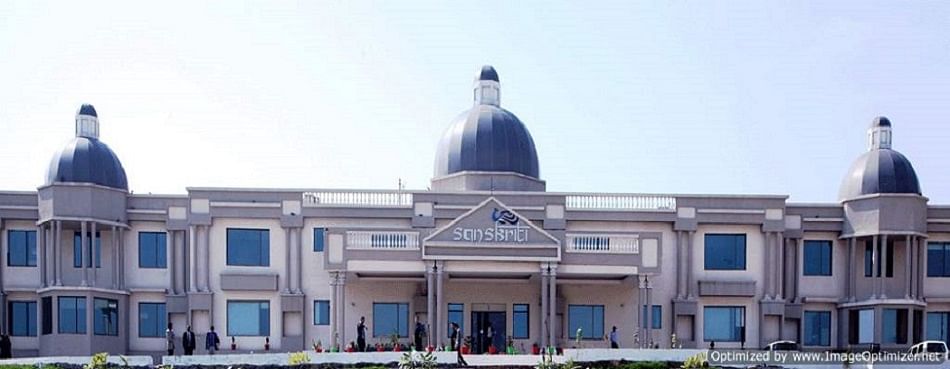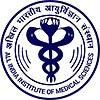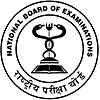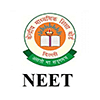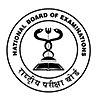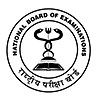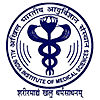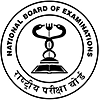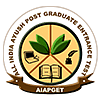BAMS Syllabus and Subjects 2024
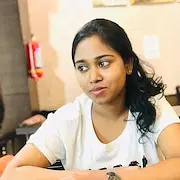
Latest Updates for BAMS
- 24 April 2024 :
NEET 2024 city intimation slip has been released on Ap 24, 2024.
- 18 April 2024 :
AIAPGET Application Form 2024 is out. The last date to apply is May 15, 2024.
- 16 April 2024 :
NEET PG 2024 Exam Date has been preponed to Jun 23, 2024.
- 16 April 2024 :
NEET PG application form 2024 has been released on Apr 16, 2024.
The BAMS syllabus imparts practical, and theoretical knowledge in the fields of Ayurvedic science and contemporary medical & surgery practices. BAMS subjects provide an in-depth insight into the study of modern anatomy, pathology, physiology, principles of medicine, and pharmacology.
BAMS first-year subjects mainly include the foundational areas of Ayurvedic science associated with medicine and surgery. A similar pattern is followed in the remaining years.
The Bachelor of Ayurvedic Medicine And Surgery new syllabus is well-designed and allows the graduates to practice ancient Ayurvedic medications and practices independently or at a healthcare centre. Hence, the job scope of BAMS graduates is broad in terms of acquiring opportunities in the areas of healthcare services, research, and medicine.
Check Detailed Year Wise Syllabus:
| BAMS 1st Year Syllabus | BAMS 2nd Year Syllabus |
| BAMS 3rd Year Syllabus | BAMS 4th Year Syllabus |
Table of Contents
Year Wise BAMS Syllabus
BAMS syllabus provides the foundational knowledge of Ayurveda and is divided into four parts which include Sanskrit, Padartha Vigyan, Ayurveda Itihas, and Ayurvedic Nirupama. The BAMS subjects year-wise are given below:
BAMS 1st Year Syllabus
The BAMS 1st year syllabus includes the study of Ayurvedic Nirupama, Pariksha, etc. The table below contains the
|
BAMS 1st Year Subjects |
Part A |
Part B |
|
Sanskrit |
Vyakaranam, Translation |
Vaidya Sadvrittam |
|
Padartha Vigyan And Ayurved Itihasa |
Ayurveda Nirupana, Ayurveda Darshana Nirupana |
Gunavigyaniyam, Karma Vigyaniyam, |
|
Kriya Shareera |
Dosha, Prakriti, Modern Physiology, Vitamins & Minerals |
Dhatu, Rasa Dhatu, Rakta Dhatu, Mamsa Dhatu |
|
Rachana Shareera |
Paribhasha Shaarira, Garbha Shaarira, Pramana Shaarira |
Anatomical Terminologies, Embryology |
|
Maulik Siddhanta Evum Astanga Hridya |
Ashtanga Hridaya Sutrasthana Adhyaya, |
Ashtanga Hridaya Sutrasthana Adhyaya |
BAMS 1st Year Practical Subjects
Students are introduced to several practical subjects under the BAMS course syllabus. Some of the practical topics under the BAMS Syllabus 1st year are given below:
- Ayurvedic practical
- Modern physiology practical
- Study of Bone
- study of Organs
- Shava Vichhedana
| BAMS Course Details | BAMS Admission Without NEET |
BAMS 2nd Year Syllabus
BAMS 2nd year syllabus includes the study of Dravay Vidhi Vigyan subjects. The table below contains the BAMS 2nd-year subjects along
|
BAMS 2nd Year Subjects |
Part A |
Part B |
|
Agadtantra |
Visha and Agadatantra, Vishopakrama, Jangama Visha |
Vyavahara Ayurveda, Vidhivaidyaka, Forensic Odontology |
|
Charakasamhita -purvardha |
Sutrasthana, Indriyasthana |
Nidanasthana, Vimanasthana, Sharirasthana |
|
Rasashastra Evam Bhaishajyakalpana |
Dravya Varga, Application of Musha, Brief description of Yantras |
Maharasa, Uparasa, Ratna, Sudha varga, Dhatu |
|
Bhaishajyakalpana |
Bhaishajya Kalpana, Bheshajprayogavidhi, Aushadhisiddha |
Bahyopacharartha kalpana,Netraupacharartha kalpana |
|
Dravyaguna Vijnan |
Dravyaguna Shastra Paribhasa, Dravya, Guna |
Dravya Shodhana, Apamishran, Nighantu Vigyan |
BAMS 2nd year Practical Subjects
Some of the practical topics under the 2nd year BAMS syllabus are given below:
- Study of the microscopic and macroscopic characters of Stem & Leaves
- Fundamental Principles of Laboratory Tests
- Hematology
| NEET Cutoff for BAMS | BAMS Salary Details |
BAMS 3rd Year Syllabus
The table below contains the 3rd-year
|
BAMS 3rd-Year Subjects |
Part A |
Part B |
|
Rog-Nidan |
Dosha Dushyadi Vigyana, Vyadhi Vigyana, Basic Pathology, Rasavaha Srotas |
Nidana Panchaka Vigyana, Pariksha Vigyana, Pranavahasrotas |
|
Swasthavritta |
Dinacharya, Rathricharya, Ritucharya, Sadvritta |
Janapadodhwamsa, Vayu, Jala |
|
Prasooti Tantra And Stri Roga |
Stri Sharira Vigyana, Rajo Vigyana, Garbha Vignyana |
Artava Vyapad, Yoni Vyapad, Vandhyatva, Stanaroga |
|
Kaumarbhritya Parichaya |
Vayobheda, Prana Pratyagamanam, Navajata Shishu Paricharya, |
Sahajavyadhi, Prasavottara Vyadhi, Aupasargika Vyadhi |
|
Charak Samhita |
Uttarardha, Chikitsa |
Kalpa, Siddhi Sthana |
BAMS 3rd year Practical Subjects
Some of the practical topics under the BAMS syllabus for third-year are given below:
- Post Mortem
- Clinical Posting
- Evidence in Court
- Demonstration of Dinacharya procedures
- Clinical training-obstetric skills
- Gynecological Skills
- Clinical exposure to care for Newborn
- Vaccination
- Blood Sampling
| BAMS vs BHMS | MBBS vs BDS vs BAMS vs BHMS |
BAMS 4th Year Syllabus
As a part of the BAMS 4th-year syllabus, students must do research work in Ayurveda. The table below contains the subjects of the BAMS final year syllabus
|
BAMS 4th Year Subjects |
Part A |
Part B |
|
Kayachikitsa |
Chikitsa sutra, Dvividhopakrama, Shadavidhopakrama |
Etiopathogenesis, Nidana and Chiktsa, Vajikarana |
|
Panchakarma |
Sneha and Snehana, Bahyasnehana, Abhyanga |
Raktamokshana, Basti Karma, Svedana |
|
Shalya Tantra |
Nirjantukarana, Sangyaharan, Trividha Karma |
Shat Kriyakala, Vrana, Twak Vikara |
|
Shalakya Tantra |
Netra Samanya, Vishishta Chikitsa, Sandhigata Roga |
Samanya Chikitsa, Shiro Roga, Karna Roga |
|
Research Methodology And Medical Statistics |
Anveshana, Gaveshana, Prayeshana, Anusandhan, and Shodha |
Types of Research, Research Process, Research Tools |
Bachelor of Ayurvedic Medicine And Surgery 4th year Practical Subjects
Some of the practical topics under the BAMS final year syllabus are given below:
- Patient examination
- Observation of OPD patients
- IPD (Panchkarma) and Panchakarma Unit
- Identification and utility of surgical instruments
- Bedside Clinicals
- Identification and usage of different Surgical tools
- Para-surgical training procedure
- Sterilization
Top BAMS Colleges by City
| BAMS Colleges in Pune | BAMS Colleges in Nagpur |
| BAMS Colleges in Bangalore | BAMS Colleges in Delhi |
| BAMS Colleges in Dehradun | BAMS Colleges in Mumbai |
| BAMS Colleges in Chennai | BAMS Colleges in Jaipur |
Important Facts for BAMS Syllabus
Bachelor of Ayurvedic Medicine And Surgery is the study of Ayurveda, Medicine, And Surgery. Here are some essential facts to know before one should pursue BAMS:
- BAMS Courses Duration: BAMS syllabus is spread across a five-year or five-and-a-half-year. The last year or year-and-a-half will require students to do an internship.
- Uniformity of Syllabus: For BAMS, all universities follow the same curriculum, unlike other programs. Colleges follow the syllabus prescribed by the Central Council of Indian Medicine (CCIM). Thus, the only thing differing across colleges is the quality of their facilities.
BAMS Subjects
BAMS subjects are designed to enhance the knowledge and understanding of Ayurveda with the concepts of modern medicine. BAMS subjects 1st year usually include the core topics and the electives get introduced in the remaining years. The following are some of the core & electives subjects under the BAMS new syllabus:
BAMS Core Subjects
The core BAMS subjects list contains essential topics that all BAMS students require to study, which are as follows:
- Padartha Vigyan And Ayurved Itihas
- Sanskrit
- Rachana Sharir
- Kaumarbhritya Parichaya
BAMS Elective Subjects
The elective BAMS subjects list contains subjects that BAMS students can take, which are as follows:
- Rasa Shastra
- Agad Tantra
- Swasthavritta
- Shalakya Tantra
Bachelor of Ayurvedic Medicine And Surgery Subjects in Detail
Students get to study a wide range of subjects based on Ayurveda & Ayurvedic science under the BAMS course syllabus. Some of the BAMS course subjects are discussed thoroughly below:
| BAMS subjects | Topics Covered |
| Padartha Vigyan And Ayurved Itihas | Ayurveda Nirupana, Ayurveda Darshana Nirupana, Dravya Vigyaniyam, Gunavigyaniyam, Karma Vigyaniyam, Samanya Vigyaniyam |
| Kriya Sharir | Dhatu, Rasa Dhatu, Rakta Dhatu, Mamsa Dhatu, Meda Dhatu, Asthi Dhatu, Majja Dhatu, Ojas, Upadhatu, Mala, Panchagyanendriya |
| Dravyaguna Vigyan | Dravyaguna Shastra Paribhasa, Dravya, Guna, Rasa, Vipaka, Veerya, Prabhava, Karma, Mishraka Gana, Basis of nomenclature |
| Agadtantra | Visha Utpatti, Visha Prabhava, Visha Pranaharana Kriya, Garavisha, Dooshivisha, Viruddhahara, Vishopakrama by Charak |
| Rognidan | Dosha Dushyadi Vigyana, Vyadhi Vigyana, Nidana Panchaka Vigyana, Pariksha Vigyana, Diseases of Raktavaha Srotas, Diseases of Annavaha |
| Swasthavritta | Dinacharya, Rathricharya, Ritucharya, Sadvritta, Trayopastambha, Roganutpadaniya, Rasayana for Swastha, Ahara, Panchakosha Theory |
| Kayachikitsa | Chikitsa sutra, Dvividhopakrama & Shadavidhopakrama, Vajikarana, Manas & Manovahasrotas, Kroshtukashirsha, Udavarta, Kampavata |
| Panchakarma | Snehana, Bāhya Snehana, Ābhyantara Snehana, Shodhanārtha Snehana, Sadyo Sneha, Bronhanarth Senhana, Avapeedak Sneha, Svedana |
BAMS Course Structure
BAMS course structure is designed with a skill-oriented and industry-relevant curriculum. The course is composed of 5 years and 6 months. According to the Central Council of Indian Medicine, it is divided into four professional courses. The general course structure is given below:
- IV Professional Years
- Core Subjects
- Specializations
- Practical Labs
- Project/ Thesis Submission
- Research Review Paper
- Mandatory Internship
BAMS Teaching Methodology and Techniques
The BAMS syllabus includes theoretical classroom-based teaching and internship work to understand the concepts effectively. Students learn through projects, seminars, and assignments during the course duration of 5.5 years. Listed below are the teaching methodology and strategies for the Bachelor of Ayurvedic Medicine And Surgery in general:
- Group Projects
- Traditional Classroom-Based Teaching
- Practical Lab Sessions
- Talks from guest speakers
- Seminars
- Internships
BAMS Projects
BAMS projects are given to students for practical learning of theoretical topics. Projects assist students in getting hands-on experience and gaining skills to manage medical work. Projects are to be completed by the end of the fourth professional year. Some popular Bachelor of Ayurvedic Medicine And Surgery projects are listed below:
- Documentation and validation of traditional activities, and folklore in connection with human and veterinary use
- Examination of Medical and Ayurveda explanations in non-Ayurveda literature such as Vedas, Puranas, Samhitas, Sanskrit literature, and so forth
- Specific diseases and study of Shat Kriya Kala. Establishing a correlation in the clinical, Pathological and Biochemical and Immunological, and Molecular markers
- Analysis of drug and drug interaction between Ayurvedic drugs and Allopathic drugs
BAMS Reference Books
BAMS books are available both online and offline from many authors and publications. Reference books are meant for a better understanding of concepts. BAMS 1st yearbooks mainly focus on fundamental concepts. Some of the best reference books for BAMS are:
| Name of the Books | Authors |
| Sanskrit Ayurveda Sudha | Dr. B. L. Gaur |
| Psycho Pathology in Indian Medicine | Dr. S.P. Gupta |
| History of Indian Medicine (1-3 parts) | Dr. Girindra Nath Mukhopadhyaya |
| Indian Medicine in the classical age Acharya | Priyavrata Sharma |
| Ayurvedic Human Anatomy | Prof. Dr. Giridhar M. Kanthi |
Top BAMS [Bachelor of Ayurvedic Medicine and Surgery] Colleges
Top Medical Entrance Exams
BAMS Fee Structure
FAQs
What are the subjects in the BAMS 1st year?
Some of the core subjects in the BAMS 1st year syllabus are Sanskrit, Padartha Vigyan (Ayurvedic Philosophy), Ayurveda Itihas (History of Ayurveda), Kriya Sharir (Physiology), Rachana Sharir (Anatomy), etc.
In which language BAMS is taught?
All texts in the course are written in Sanskrit, and basic knowledge of the language is required to understand them.
Does BAMS include training to become a surgeon?
Yes, you will be able to perform a variety of surgical procedures, including general surgery, ENT, ophthalmology, and dental procedures if you obtain an MS after BAMS.
Which branch is best after BAMS?
Popular courses pursued after BAMS include MPH (Masters in Public Health), MHA (Masters in Health Administration), MBA in Hospital and Healthcare Management, etc.
Which is better BAMS or MBBS?
The BAMS program emphasizes natural remedies and herbal medications, whereas the MBBS course focuses on modern medical treatments and pharmaceuticals.
What are BAMS projects?
BAMS syllabus includes several projects on Ayurvedic science and practices that includes folklore, Medical & Ayurveda explanations in non-Ayurveda literature, Shat Kriya Kalaetc.
What are some BAMS books?
Students can acquire the course benefits to a greater extent by referring to various books such as Sanskrit Ayurveda Sudha by Dr. B. L. Gaur, Psycho Pathology in Indian Medicine by Dr. S.P. Gupta, etc.
